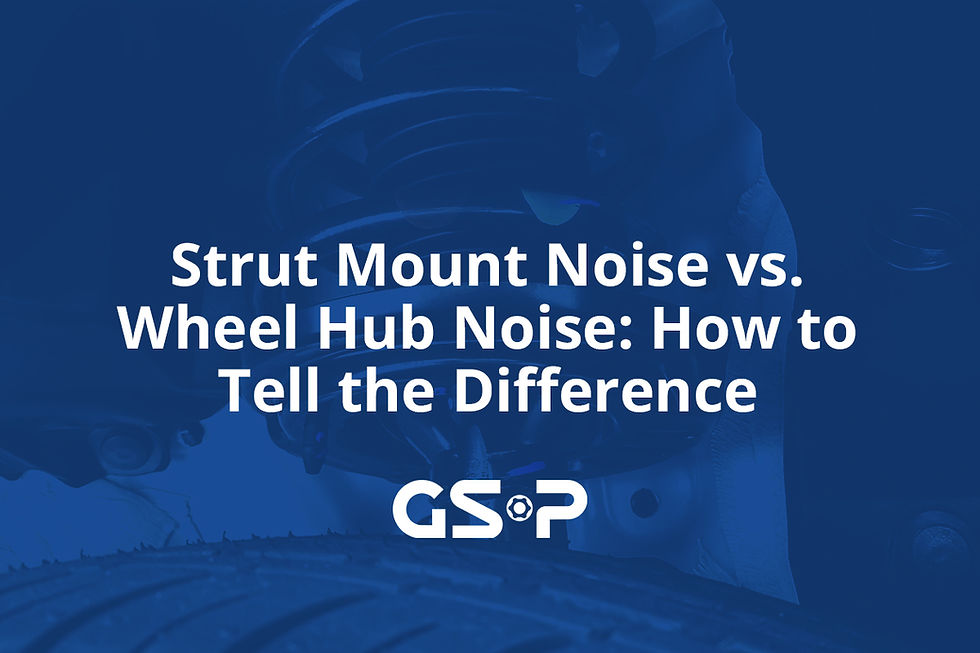What Are Strut Mounts and Why Do They Fail?
- chaseteam
- Aug 17
- 2 min read
Strut mounts are small but essential suspension components that many drivers overlook. They connect the strut assembly to the vehicle and provide both structural support and vibration damping. When strut mounts begin to wear or fail, they can create noticeable problems that affect comfort, handling, and safety. At GSP Latin America, we believe understanding the role of strut mounts helps drivers address issues early and keep their vehicles performing reliably.
What Is a Strut Mount?
A strut mount is the connection point between the strut assembly and the vehicle’s body. In addition to providing a secure attachment, it often includes a rubber or polyurethane layer that absorbs vibrations and reduces road noise inside the cabin. Many front strut mounts also contain a bearing that allows the strut to rotate with the steering system.
Why Strut Mounts Fail
Strut mounts are constantly exposed to pressure, road impacts, and weather conditions. Over time, the rubber components deteriorate due to heat, cold, and moisture, losing their ability to absorb vibrations. The bearings inside front strut mounts can also wear out, leading to steering stiffness or noise. Heavy driving conditions, rough roads, and lack of maintenance accelerate this wear.
Symptoms of a Failing Strut Mount
One of the first signs is unusual noises such as clunking, squeaking, or creaking, especially when turning or driving over bumps. Worn mounts can also cause excessive vibration inside the cabin, uneven tire wear, or a noticeable decline in steering precision. If the bearing is worn, drivers may feel increased resistance when turning the steering wheel.
Safety and Performance Risks
Ignoring failing strut mounts can compromise vehicle safety. Worn mounts reduce the strut’s ability to absorb shocks effectively, leading to harsher rides and increased strain on suspension components. A failing bearing can cause steering issues, which may result in delayed or unpredictable vehicle response. Over time, this increases the risk of losing control, particularly during sudden maneuvers.
Replacement Tips
Strut mounts should always be replaced when installing new struts. Using high-quality replacements ensures better ride comfort and longer service life. Because strut replacement involves handling coil springs, professional installation is strongly recommended. Regular inspections during suspension service can also help catch failing mounts before they create major problems.
Conclusion
Strut mounts may be small, but their role in suspension safety and comfort is vital. When they fail, the effects ripple through the entire suspension and steering system. At GSP Latin America, we provide durable, precision-engineered strut mounts that restore vehicle stability and performance. Contact us today to find the right suspension components for your vehicle.














Comments